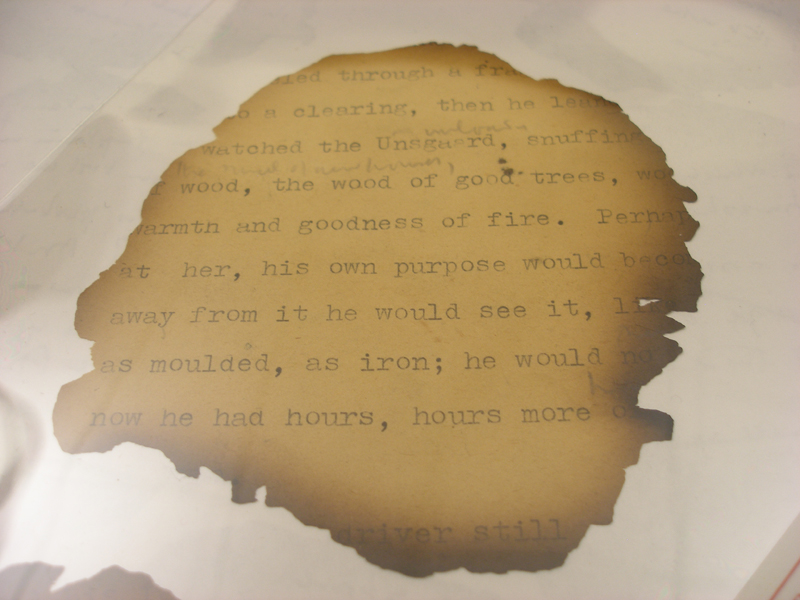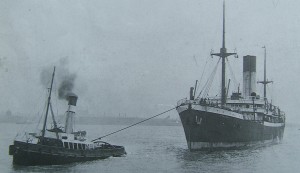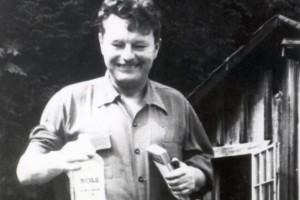Expand Your Mind: The Late, Great Malcolm Lowry

In anticipation of the launch of a new edition of Malcolm Lowry’s thought-to-be lost 1930s autobiographical novel, In Ballast to the White Sea, Adrian Challis considers the strange absence of recognition for the greatest late Modernist novelist of whom you’ve probably never heard…
What to make of Malcolm Lowry? Very few people seem to have heard of him. Despite writing one of the truly great novels of the 20th century, Under the Volcano, his 1947 masterpiece set around the Day of the Dead in Mexico, he has apparently fallen from favour amongst today’s readers. Even I, who became obsessed with him during my English degree, forgot to write about him in my finals. The only person who did was also the only person to graduate with a First that year. A coincidence, I’m sure.
In preparing for this article, I wanted to re-read Under the Volcano, but having long-ago given away my copy – a phenomenon one often encounters with great novels you want others to read – I went searching for a second-hand copy. My quest took me to Liverpool’s best used bookshop, Reid’s, on Mount Pleasant. I asked the owner if he had a copy.
“You’ve asked me that before”, he informed me. Really? I asked. If I have it must have been about 20 years ago.
“That sounds right”, he said. Astonished by his memory, I asked his name. Gerard Fitzpatrick came the reply.
“And you won’t find one. Nobody has one, I know. The person you need to speak to is at the Bluecoat. What’s his name…”
“The guy at the bookshop, which isn’t in the Bluecoat anymore?”
“No, the Artistic Director.”
“Bryan Biggs?”
“That’s the fella. Ask him.”
The irony, of course, is not only that I am good friends with Bryan, but the reason I wanted a copy was to write this article promoting the launch, of the first new volume of Lowry’s writing in almost 50 years, at the Bluecoat this Saturday. Bryan did indeed have a copy, and lent it to me. He also gave me a copy of a wonderfully luxurious book he had a hand in publishing, called From the Mersey to the World, a 2009 retrospective and an accompaniment to the exhibition the Bluecoat held, and that I missed, to celebrate Lowry’s centenary.
As I read Biggs’ excellent introduction, I began to shake. Right there I read: ‘By happy coincidence, one of the best known second-hand bookshops in Liverpool owes its existence to Lowry, for it was the discovery of a 1933 first edition copy of Lowry’s first novel, Ultramarine, some thirty years ago that provided funds for former merchant seaman Gerard Fitzpatrick to set up Reid of Liverpool. He acquired the book, complete with original dustjacket and review copy note from publishers Jonathan Cape, for just 20 pence in Wallasey on the Wirral, and – on realising the treasure he had unwittingly acquired – sold it for £1,000, with which he set up the bookshop…’
Suddenly the fact that Gerard remembered me made absolute sense.

Born Clarence Malcolm Lowry in New Brighton, Merseyside in 1909, the soon-to-be-forgotten Modernist was the son of a rich cotton merchant who had moved his family from Liverpool to the Wirral when, as is often the case, his business became successful. Educated firstly in West Kirby and later in Hertfordshire, in 1923 the now simply Malcolm Lowry attends The Leys school in Cambridge as a boarder, and has his first short stories published in the school magazine. So far, so traditional middle class.
After paying for some songs he and his friend Ronnie Hill had written to be published in London, he suddenly travels back to Merseyside and enlists as a deckhand on the SS Pyrrhus, bound for the Far East. Aboard, Lowry finds the inspiration to begin his real work; his experiences are to form the basis of his novel Ultramarine, published in 1932. Returning to England in September 1927, he studies for his Cambridge Entrance Exam to where he is admitted in 1929, graduating with a difficultly acquired Third in 1932.
It is then that the really extraordinary period of Lowry’s life begins. Having read American writer Conrad Aiken’s novel Blue Voyage in 1927, Lowry goes to stay with him in Boston, Massachusetts as a paying house guest. Four years later, he travels with Aiken and artist Edward Burra, another sadly neglected English genius, to Granada in Spain, where in May he meets Jan Gabrial, whom he marries in Paris the following January. When she returns to her native New York, Lowry sails from Southampton in July 1934 to be with her, beginning work on his next book, In Ballast to the White Sea, on the journey over. Drinking a seemingly inhuman amount of alcohol, Lowry finally checks himself into Bellevue psychiatric hospital to dry out, the first of many admissions.
Like all great artists, he uses his experiences there to form the basis of a new work, a novella called Lunar Caustic, posthumously published in 1968. Seemingly infected with a travelling bug, Lowry and Gabrial travel by Greyhound bus across the US, before embarking for Acapulco in Mexico, arriving on the Day of the Dead.

It is in Mexico that Lowry finally finds his métier. Renting a house in Cuernavaca, he begins work on a short story, which becomes a novella, before finally becoming the epic novel which would make his soon-to-be forgotten name, Under the Volcano.
So why should you read it? As West-Coast philosopher Avital Ronell once said of her own work, it is a book that is destined to ‘resist you’, its difficulty perhaps contributing to its obscurity. Its structure is complex, its creation anachronistic; Lowry wrote it and re-wrote it over a period of almost ten years and never in the order in which it finally appeared. But its prose is astonishing, hallucinatory, its evocation of Mexico so vivid you can taste the bougainvillea, its protagonist Geoffrey Firmin — a thinly-disguised Lowry — drowning in an overdose of mescal and tequila, unable to help himself or anyone around him.
My favourite metaphor for its main character is the vinegaroon, the South American insect ‘that stings itself to death beneath the stone’ as Lowry himself wrote in one of his excellent poems.
The book takes place in one day, like Ulysses, but in the case of Under the Volcano it is set on the Mexican Day of the Dead, a sickeningly appropriate celebration. The subject of a dissatisfactory 1984 filmic adaptation by John Huston, it deserves a close and repeated reading. Really? Why really should you read it? You may as well ask why read Joyce, or Yeats, or Conrad, whose writing Lowry’s closely resembles. In short, why read at all?
This weekend’s event at the Bluecoat is the launch of a hitherto unpublished novel, In Ballast to the White Sea. Believed lost, the only copy burned when a fire consumed Lowry’s crumbling writer’s shack in 1944, a manuscript was discovered by Jan Gabrial, who typed up a clean copy in 1991. This copy, in keeping with Gabrial’s wishes, was then deposited in the New York Public Library in 2003. Since then, it is thought that fewer than a dozen people have read what Lowry himself believed to be his Paradiso, with Under the Volcano and Lunar Caustic representing the other two volumes of his Dantean trilogy.
Now you have the chance to become a part of history, by attending the launch and perhaps purchasing a copy of your own. It is said to shed light on a hitherto undocumented politically engaged Lowry, who was imprisoned in Oaxaca and later deported from Mexico for fighting fascists in the street. Or you could just read Under the Volcano. And seriously expand your mind.
Adrian Challis
The day-long Lowry Lounge event — on Saturday 25 October 2014 – features UK writer Iain Sinclair, who will be talking about Lowry in relation to his 2013 book American Smoke, which follows in the footsteps of the American Beat writers and of Lowry, whose writing in many ways anticipated theirs. It also includes a guided walk around Liverpool city centre, led by historian, artist and Lowry fan Colin Dilnot, visiting sites relating to the book and to Lowry’s childhood years on Merseyside. The book launch itself will be introduced by the editor of In Ballast to the White Sea, Patrick McCarthy, and Vik Doyen who wrote its foreword.
Tickets: Walk (11pm-1pm) £5; Iain Sinclair talk (2-3:30pm) £5; combined ticket £8; book launch (4-6pm) FREE
More online resources can be found in this helpful Guardian article





